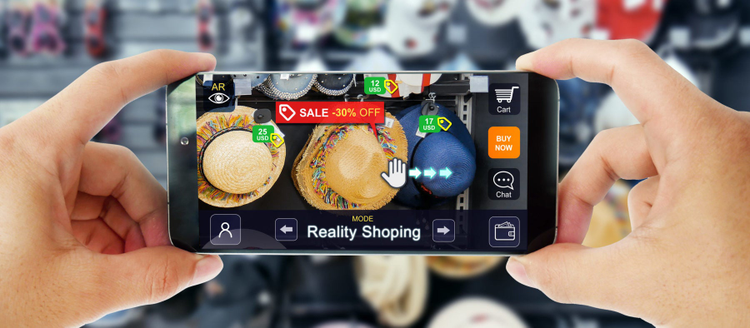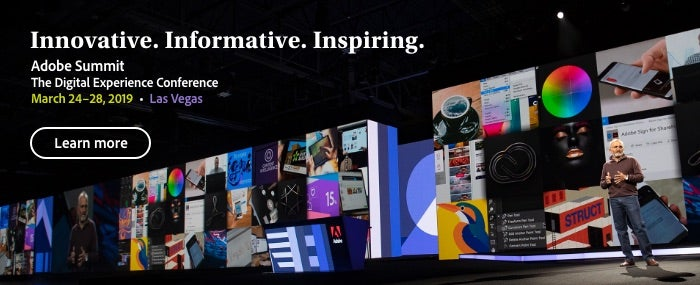Digital Transformation for the Retail CIO: Connecting Digital with Physical
How the changing role of the CIO sets the stage for unprecedented company success.

Digital is certainly disrupting retail. Today’s shoppers are multichannel, and they expect amazing experiences as they move through the web and apps on their mobile devices for the shopping journey. Add to that a slew of options on where to buy and whom to buy from, and it’s easy to see that in order to build customer loyalty, retailers need to create experiences that stand out.
But if all you’re thinking about is digital, you aren’t thinking big enough. The successful retail CIOs are finding exciting new ways to connect digital and physical shopping experiences.
Retail CIOs are on the hook for enabling customer experience innovation, which means building a foundation for customer experience management (CXM) and investing in the right technologies and solutions to support it. And CXM isn’t just a digital strategy — it needs to be part of your brick-and-mortar strategy too.
While there’s no clear-cut playbook or one-size-fits-all formula for success, there are some emerging best practices that can help you design amazing shopping experiences that bridge the digital and physical worlds. Here are three of them.
1. Hire a CDO
The role of chief digital officer/chief data officer (CDO) is still relatively new — most CDOs have been hired in the past three years — and the job is evolving. However, 82% of CIOs believe there’s a compelling case to hire a CDO. At organizations where commerce comes into play, such as in the retail space, CDOs are what’s next.
Case in point: Nike, Staples, and Urban Outfitters are just a few of the retailers that have recently hired CDOs, and most often these executives report into the office of the CIO. And if they don’t report to the CIO, they’re working hand in hand with IT to enable digital transformation throughout the organization.
Indeed, CDOs bridge all the functions, including marketing, strategy, e-commerce, and IT, that have to work together to deliver exceptional shopping experiences. Perhaps more than any other member of the C-suite, your CDO must focus relentlessly on understanding your customers’ current behavior and anticipating their future needs and expectations, and then use those insights to shape business strategy and technology decisions.
CDOs are often responsible for experimenting with digital tools that drive growth and efficiency (such as programmatic media buying) and transforming the customer experience (such as mobile apps that improve the in-store shopping experience). Your CDO should partner with you and the CMO to find better ways to use and manage customer data, deliver personalized content and offers, and design cohesive customer experiences that span physical and digital channels.
2. Bring digital experiences into your physical stores
Storefronts and current technology systems are often disconnected, and information exists in silos. As CIO, you must be agile and adaptable as you deploy technology solutions in a world that is always changing and increasingly calling for digital experiences in a physical space.
Physical and digital convergence in retail is all about creating a connected customer experience and personalizing it. The personalization part is critical, and something you, as CIO, can contribute to in a big way.
Most major retailers already offer customers the option to buy online and pick up in store (BOPIS), but we’re starting to see many retailers adopt in-store technology options that enhance the overall in-store shopping experience as well.
These solutions address inventory and product availability, helping customers find the product they want, even if it’s out of stock in their store. Other new tech offers product customization and AI-powered virtual trials. Apparel brands like Adidas and UniQlo, for example, have 3D “Magic Mirrors” in their fitting rooms, where a customer can try on a jacket in one style and then see how other colors and styles would look on her body without actually putting them on.
There’s also a growing trend in arming in-store retail associates with technology to make them more effective. For example, The Container Store has completely revolutionized the customer experience by giving sales associates wearable devices packed with product and order information, making problem-solving easier and more streamlined for customers.
What does all of this in-store technology have to do with the CIO? It’s the job of CIOs to play an active role in determining which of these in-store tech innovations are adopted on a mass scale.
3. Make it happen with mobile and AI
There’s no question that mobile devices are key to connecting physical and digital experiences. From synchronized grocery shopping lists, self-checkout, and mobile wallets to item locators and in-store delivery of targeted online content, mobile continues to revolutionize how retailers like you engage customers.
Nearly half of retail CEOs have listed in-store mobile experiences as a top priority for the coming fiscal year. Other studies show that 60-80% of customers report using their mobile devices to search store inventory while they shop — comparing prices and looking for deals, coupons, and reviews. Mobile is already part of their shopping experience.
As CIO, you can help lead the charge to make those experiences even better. Two companies that are using mobile to bridge the in-store/digital divide are Home Depot and Walgreens. Their mobile apps give consumers a map of the store to help them find the products they need in the right aisle and shelf. When a customer opens the app, the retailer knows he’s in the store and can recommend other items based on his recent shopping and browsing activity. That kind of personalization requires tightly integrated systems and processes. As CIO, you can help drive the cross-functional orchestration that has to happen behind the scenes to deliver the connected, highly targeted experiences customers now expect.
Augmented reality (AR) is a mobile tech category every retail CIO should be exploring. IKEA’s Place app, for example, uses AR to help consumers envision how a piece of furniture will look in their home and whether it will fit the dimensions of a given space. Customers can point their phone camera at a corner of their living room and then drop a true-to-scale 3D image of a comfy chair into the scene — no measuring tape required. Mobile app development is the remit of the CIO, especially since there’s a direct correlation between an organization’s mobile maturity and its profitability. In the retail space, an app is a really important driver of commerce, one that’s growing in importance as revenue from mobile continues to climb.
And don’t forget about the power of artificial intelligence. AI helps retailers quickly process mountains of data to find insights and make decisions to personalize shopping experiences. We’ve already mentioned virtual fitting rooms and digital “endless racks” for fashion products. Sephora’s gesture- and touch-based mobile interface, which lets customers virtually try on cosmetics, is also fueled by AI. Other examples include in-store robotic assistants and digital touch panels that can help customers locate an item, and chatbots that answer questions, offer suggestions, and provide timely support.
A slew of emerging technologies is helping to promote business agility and innovation in the development of mobile apps. If you’re not already doing so, now is a good time to explore how you might use container technology, microservices architecture, and agile and DevOps practices to design, deliver, and manage mobile apps for your customers and your employees.
Delivering top-down CXM benefits online and off — starting with the CIO
As you guide your organization toward customer-focused experiences and innovations both in-store and digitally, the entire enterprise will reap the benefits. Retailers that deliver connected customer experiences are seeing huge results: 1.4 times customer retention, 1.8 times repeat purchase rates, and 1.6 times brand awareness over brands that aren’t customer experience-driven.
For retailers, delivering consistent experiences — whether they’re digital or not — is ultimately a quest for more satisfied customers.
This journey starts at the top. As your CIO position transforms from a tech seeker to a customer experience innovator, your entire organization will enter a new phase of success.
Check out the Adobe Blog and see how CIOs are transforming and, as a result, driving the digital transformation.
